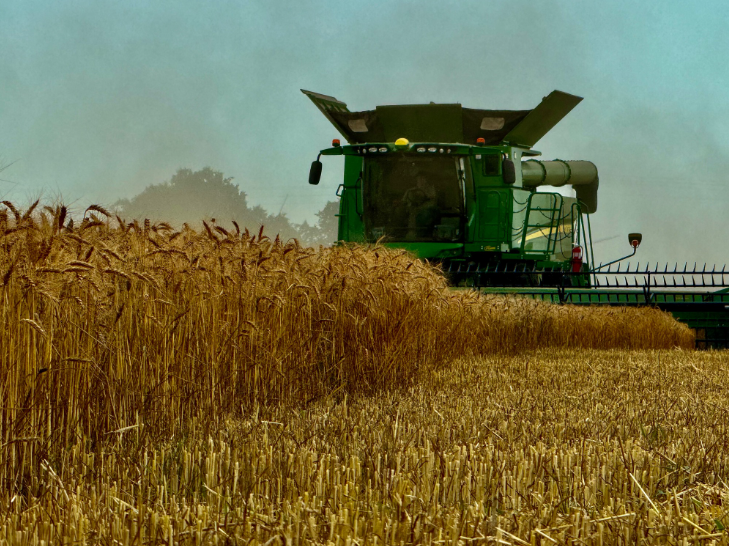
This week on SUNUP, OSU Agriculture Economist Dr. John Michael Riley discusses the winding down of the wheat harvest and its results.
As Oklahoma’s wheat harvest nears completion, Dr. John Michael Riley from Oklahoma State University says producers are seeing mixed results. “We’re finally starting to see the light at the end of the tunnel. In fact, the train’s almost coming out of that tunnel,” he said, noting that the extended harvest season has led to some yield decline. “We dropped off about two to three bushels per acre through late June. Now we’re another two to three bushels below that,” putting the state average yield somewhere in the mid-50s. Despite these drops, he adds, “It’s still been a good harvest, but just not what we probably could have been had the rains not continued to fall.”
The rainfall, while helpful earlier in the season, ended up hurting yields as the harvest stretched on. “Overall, about four to six bushels per acre” were lost due to excessive moisture, Riley explained. While individual results varied, he emphasized that “it certainly could have been worse given the level of rainfall that we received over the heavy harvest period.”
Turning to summer crops, Riley reports continued market pressure across corn, soybeans, and cotton. Although there was a temporary “bump toward the end of last week” due to heat stress and political news, weekend rains in the Corn Belt reversed that trend. “We’re still in this critical growing stage, so that’s still going to be something that the market is going to monitor,” he said. As for cotton, Riley noted, “Nationally, all of our summer crops are looking really good… that’s providing some pressure,” while Oklahoma lags “about five to eight percentage points behind where we typically are at because of all those rains.”
In terms of pricing, Oklahoma farmers are feeling the squeeze. “We’ve got tremendous weakness in basis for soybeans, 50 cents to $1 below where we typically are,” Riley said. Corn is faring slightly better but still “25 to 50 cents below average.” He estimates corn prices in the state are in the “high threes, low fours,” soybeans are in the “low nines to mid nines,” and cotton is “hovering around 67 cents a pound.” While a weakening dollar may offer a slight boost, overall market conditions remain pressured.
This week on SUNUP:
- Maira Duffeck, OSU Extension field crops pathologist, says Southern rust is showing up in corn fields. Dr. Duffeck explains how to identify this disease and ways to manage it.
- Brian Arnall, OSU Extension soil nutrient management specialist, discusses how Oklahoma’s sorghum crop is looking and says nitrates could become an issue for livestock producers. Dr. Arnall also has information on the upcoming Sorghum Experience Oklahoma event.
- In the Mesonet Weather Report, Emma White shows how the recent heat wave is impacting the cattle comfort index. State climatologist Gary McManus says the drought picture is still looking good, but the consecutive days without a good amount of rainfall are adding up.
- John Michael Riley, OSU agricultural economist, says both trade policy and extreme heat have caused issues in the corn market, but recent national rains have helped settle things to an extent.
- SUNUP previews the upcoming 2025 Women in Agriculture Conference.
- In Cow-Calf Corner, Mark Johnson, OSU Extension beef cattle breeding specialist, discusses foxtail and how that plant can overtake a pasture and outcompete desirable forages.
- SUNUP viewers are encouraged to check out the next Rancher’s Thursday Lunchtime Series live webinar on July 31. Topics include grazing and management at Pickle Farms in LeFlore County, as well as approaches to change grazing distributions and forage quality in native grass.
- Finally, SUNUP attends the 2025 4-H State Roundup!


















